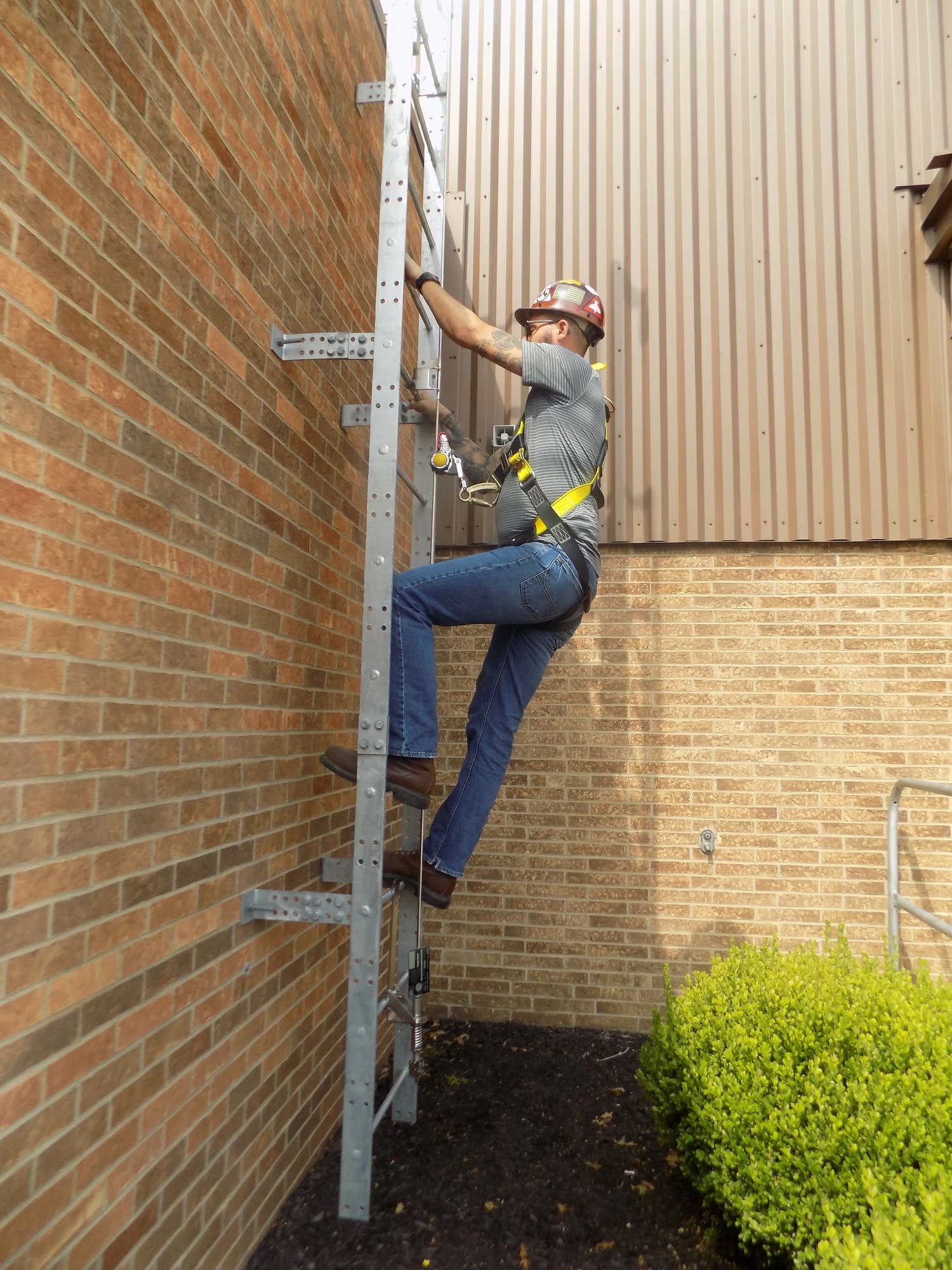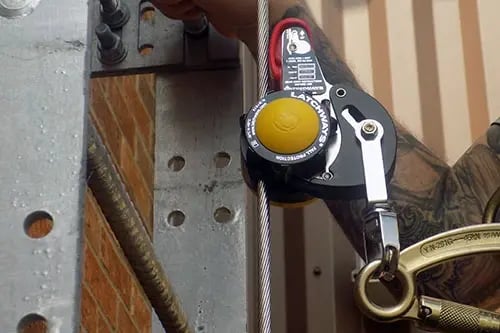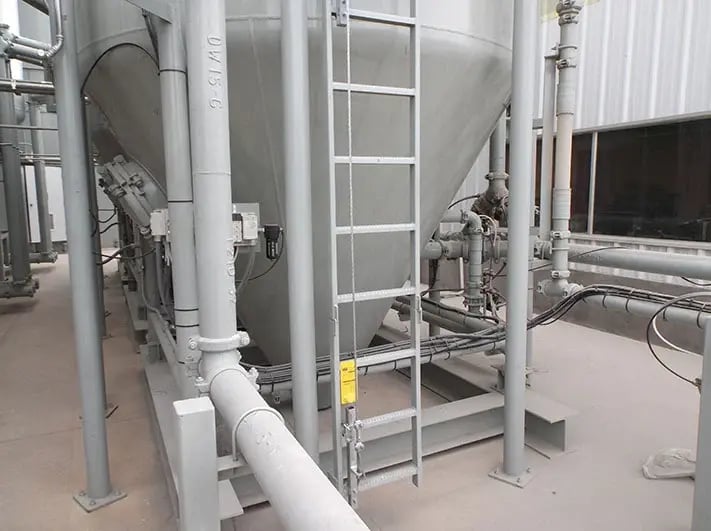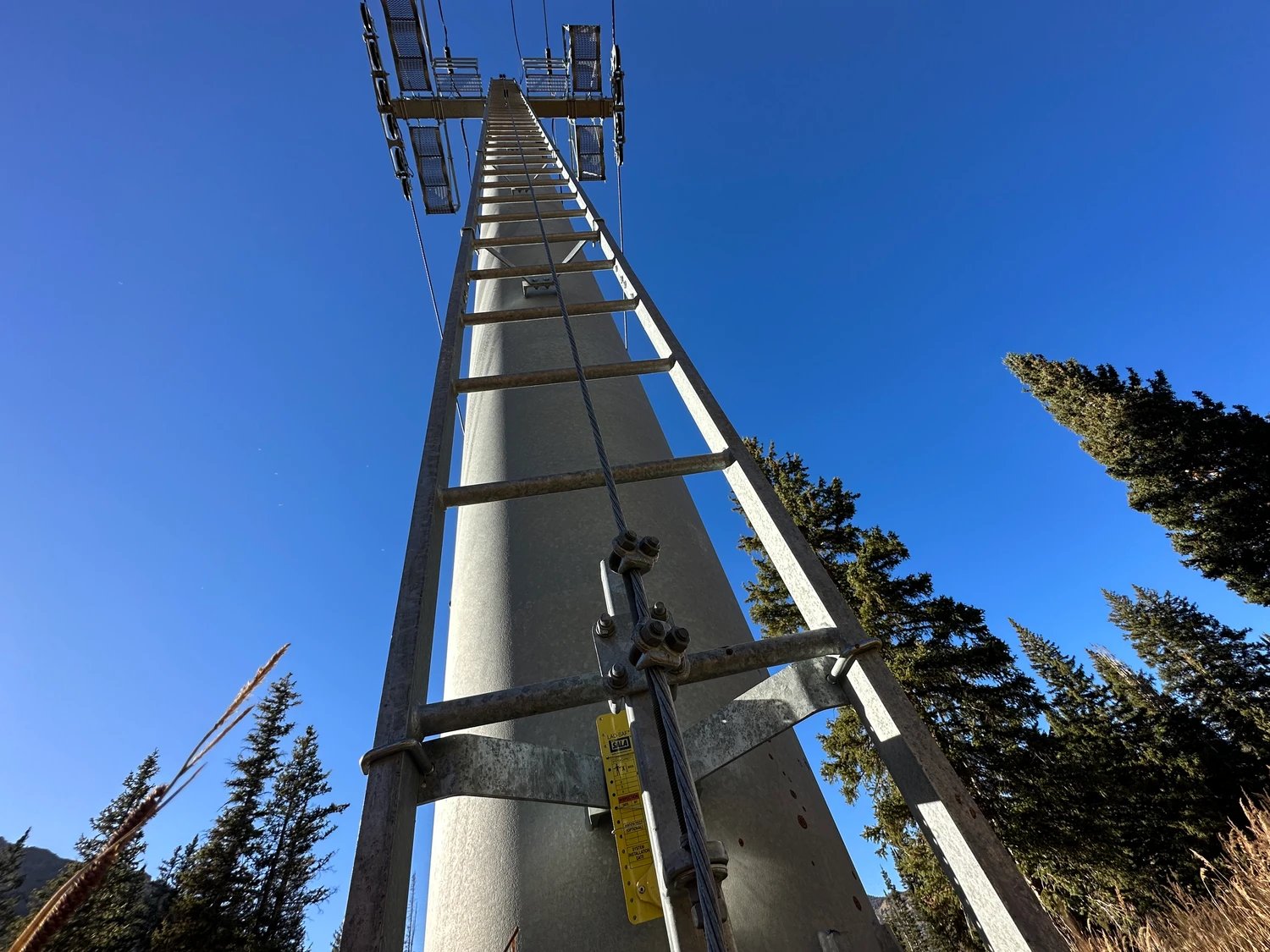Vertical Lifeline Ladder Systems
A vertical lifeline is a cable-based ladder safety system with a shuttle that connects to a worker’s harness D-ring. The shuttle serves as a mobile anchor point that travels with the worker as they make their way up and down the ladder, eliminating the need to disconnect and find new tie-off points. Users may move as long as tension is slack on the lifeline. In the event of a slip, the traveler engages the cable and arrests the worker's fall.
Ladder lifeline systems are also compliant with industry standards and OSHA's updated regulations for fixed access ladders in 2017, which dictated that ladder cages were no longer considered proper fall protection systems.
Prevent accidents, injuries, and loss with OSHA and ANSI-compliant ladders and ladder safety systems from DFP.

Design Considerations
For fixed ladders over 24 feet in height, a ladder fall protection system is required in accordance with current OSHA regulations. Ladder lifelines fit these requirements while being less expensive to fabricate, install, and maintain. Unlike ladder cages, which are no longer compliant, can't arrest falls, and only prevent a worker from falling in directions other than straight down, vertical lifelines are designed to safely stop a fall in the event of a slip or loss of grip.
When designing a vertical lifeline system for a ladder, key considerations include the strength and durability of the lifeline material, proper anchorage points that meet OSHA standards, and ensuring that the system is easily accessible and operable for the user. Additionally, the lifeline must be positioned to prevent swings or entanglements that could lead to additional hazards. The design should also ensure that the lifeline is compatible with the worker's fall arrest equipment, such as a harness, and allow for a smooth, unrestricted ascent and descent.
Incorporating a vertical lifeline into a ladder system not only complies with modern fall protection standards but also enhances worker safety by providing a reliable means to stop a fall before it results in serious injury.
See Our Ladder Lifeline Systems






b-1.jpg?width=1368&height=1340&name=Rail%20(175)b-1.jpg)

